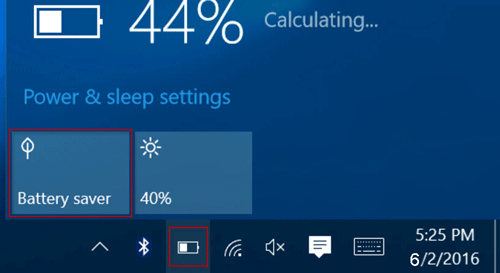Maximizing Efficiency: A Comprehensive Guide to Using Battery Saver in Windows 10

Introduction:
In the era of mobile computing, where laptops and tablets play an integral role in our daily lives, preserving battery life is a paramount concern. Recognizing this need, Windows 10 incorporates a feature known as Battery Saver. This tool empowers users to extend the battery life of their devices by implementing power-saving measures. In this comprehensive guide, we will explore the intricacies of using Battery Saver in Windows 10, providing users with the knowledge to optimize their device’s energy consumption and enhance overall efficiency.
Understanding the Significance of Battery Saver:
Battery Saver in Windows 10 is a built-in feature designed to maximize battery life by making strategic adjustments to the system’s power settings. When activated, Battery Saver conserves energy by minimizing background activities, adjusting display brightness, and optimizing power-hungry processes. Whether you’re on the go, working remotely, or simply aiming to extend your device’s battery longevity, understanding how to effectively use Battery Saver is essential.
Step 1: Accessing Battery Saver Settings:
To initiate the use of Battery Saver in Windows 10, begin by accessing the Battery settings. Navigate to the system tray on the taskbar, typically located in the bottom-right corner of your screen. Locate the battery icon, right-click on it, and select “Battery settings.”
Step 2: Enable Battery Saver:
Within the Battery settings, you will find the Battery Saver option. Toggle the switch to turn on Battery Saver. Alternatively, you can access Battery Saver settings through the Windows Settings app. Press the Windows key + I to open Settings, navigate to “System,” and select “Battery.” Here, you can enable Battery Saver by toggling the switch.
Step 3: Configuring Battery Saver Settings:
Windows 10 allows users to customize Battery Saver settings to align with their preferences and usage patterns. Click on “Battery usage by app” to view and manage app-specific power consumption. Additionally, explore the “Battery saver settings” to customize the threshold at which Battery Saver activates automatically. Adjusting these settings enables a more tailored approach to energy conservation.
Step 4: Monitoring Battery Usage:
Battery Saver provides valuable insights into your device’s power consumption. Click on “See which apps are affecting your battery life” to view a breakdown of app-specific power usage. Identify power-hungry applications and consider limiting their usage or finding alternative, more power-efficient options.
Step 5: Background App Management:
Battery Saver excels in minimizing background app activities, a significant contributor to battery drain. To further optimize your device’s power usage, review and manage background apps. Open Settings, navigate to “Privacy,” select “Background apps,” and toggle off unnecessary apps that don’t require constant background activity.
Step 6: Adjusting Display Settings:
The display is a major contributor to battery consumption. By adjusting display settings, users can significantly impact battery life. Reduce screen brightness, configure power plans to lower screen timeouts, and consider enabling adaptive brightness to let Windows 10 adjust brightness automatically based on ambient lighting conditions.
Step 7: Power Plans and Performance:
Windows 10 offers various power plans to accommodate different usage scenarios. Access Power & sleep settings to choose a power plan that aligns with your current needs. Consider using the “Balanced” or “Power saver” plans to optimize energy efficiency, especially when relying on battery power.
Step 8: Using Battery Saver Proactively:
While Battery Saver can activate automatically based on your specified battery percentage, you can also enable it proactively to conserve energy when needed. Click on the battery icon in the system tray and select “Battery Saver” to toggle it on manually.
Step 9: Updates and Driver Management:
Keeping your system updated ensures that you benefit from the latest optimizations and improvements that can impact power efficiency. Regularly check for Windows updates, and also keep device drivers up to date. Updated drivers often include performance and power management enhancements.
Conclusion:
Mastering the use of Battery Saver in Windows 10 is a valuable skill that empowers users to extend the battery life of their devices and optimize energy efficiency. By following the comprehensive guide outlined above, you can navigate the Battery settings, customize preferences, and implement strategic measures to conserve power. Whether you’re working on the go, attending meetings, or simply want to maximize your device’s longevity between charges, Battery Saver in Windows 10 is a versatile tool that puts control over power consumption in your hands. Embrace the efficiency that Battery Saver offers and enjoy an enhanced mobile computing experience in the dynamic landscape of Windows 10.







